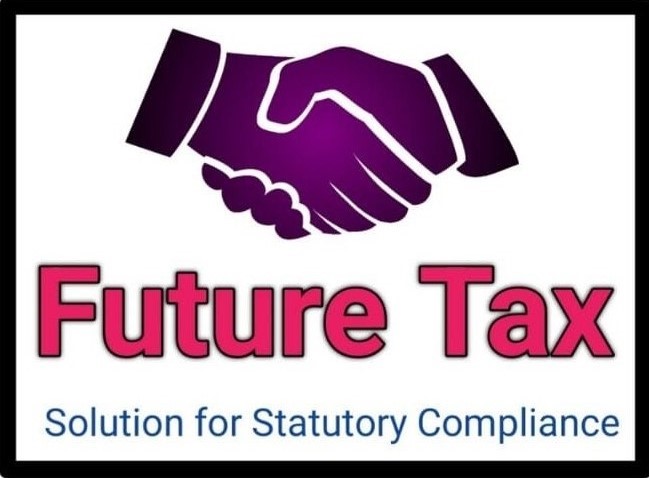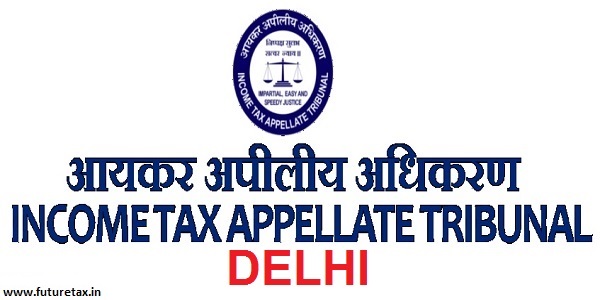
Consolidated SCNs for Multiple GST Years cannot be issued: Kerala HC in Tamil
- Tamil Tax upate News
- February 22, 2025
- No Comment
- 79
- 15 minutes read
Joint Commissioner (Intelligence & Enforcement) Vs Lakshmi Mobile Accessories (Kerala High Court)
Kerala High Court addressed the issue of consolidated show-cause notices under the CGST Act in the case Joint Commissioner (Intelligence & Enforcement) vs. Lakshmi Mobile Accessories. The case revolved around a notice issued to the respondent, covering six financial years (2017-18 to 2023-24), alleging suppressed turnover and demanding differential tax, interest, and penalties. The respondent challenged the notice, citing prejudice caused by combining multiple years into one notice, as it restricted their ability to respond effectively within the prescribed timeline. They also claimed denial of the right to cross-examine witnesses cited in the notice.
The Single Judge observed that while the denial of cross-examination could be addressed during adjudication, issuing a single consolidated notice for multiple years violated Section 74 of the CGST Act. This provision mandates adherence to specific timelines for each financial year, as adjudication periods differ for each. The court directed the appellants to issue separate adjudication orders for each financial year, ensuring compliance with statutory timelines and procedural fairness.
The state, represented by the appellants, contended that the CGST Act does not mandate issuing separate notices for each financial year. They argued that consolidating notices was efficient and consistent with procedural norms. However, the court disagreed, emphasizing that consolidated notices for multiple years undermine the statutory rights of assessees to a fair adjudication period and thorough representation for each year.
Relying on the scheme of Section 74, the court noted that the CGST Act does not envisage consolidated notices unless timelines for initiation and adjudication align for all covered years. Judicial precedents under similar provisions in tax laws, like Section 11A of the Central Excise Act and Section 28 of the Customs Act, allowed consolidated notices due to uniform timelines, but the CGST Act operates differently. Each financial year carries distinct timelines for assessment and adjudication, tied to the due date for annual return filing.
In conclusion, the Kerala High Court upheld the Single Judge’s decision, reiterating the need for separate adjudication for each financial year under the CGST Act. This judgment underscores the significance of procedural compliance and safeguards taxpayer rights, ensuring fair and equitable treatment in GST adjudication.
FULL TEXT OF THE JUDGMENT/ORDER OF KERALA HIGH COURT
The State, represented by the Joint Commissioner (Intelligence and Enforcement) and the Joint Commissioner, Tax Payer Services of the State GST Department are the appellants herein aggrieved by the judgment dated 28.01.2025 of the learned Single Judge in W.P. (C).No.2911 of 2025.
2. The brief facts necessary for disposal of this writ appeal are as follows:
The respondent herein had challenged Ext.P1 show cause notice that sought to invoke Section 74 of the Central Goods and Services Tax Act [hereinafter referred to as the “CGST Act”] to demand differential tax, interest and penalty from it on an allegation of suppression of turnover during the financial years 2017-18 to 2023-24. The main ground of challenge against Ext.P1 show cause notice in the writ petition was that inasmuch as the appellants herein had issued a single consolidated notice for six different financial years, the respondent was prejudiced in that the time limit for submitting its reply to the show cause notice in respect of each of the assessment years in question would be circumscribed by the time limit prescribed in Section 74(10) of the CGST/SGST Act for the earliest of the six financial years namely 2017-18. In particular, it was the case of the respondent/assessee that on account of the hasty action on the part of the appellants, the respondent/assessee was effectively denied an opportunity to cross-examine certain witnesses whose statements had been relied upon in the show cause notice issued to the respondent.
3. The learned Single Judge, who considered the matter, did not deem it necessary to entertain a challenge against the show cause notice on the ground of denial of opportunity to cross examine witnesses. In particular, it was noticed that although it was the contention of the respondent that an opportunity for cross examination was not being granted, there was nothing on record to assume that any procedure contrary to law would be adopted by the appellants herein. It was also observed that if an opportunity for cross examination, as required by law, was not granted, the same was a matter to be considered by the hierarchy of authorities under the CGST Act in adjudication proceedings before them. The learned Judge, however, found force in the contention of the respondent/assessee that issuing a composite order covering all the financial years from 2017-18 to 202324 would prejudice the respondent/assessee in relation to its contentions for those assessment yeas where the time limit prescribed under Section 74(10) of the CGST Act would not expire by 07.02.2025, which was the last date for passing orders in respect of assessment year 2017-18. The learned Judge therefore granted liberty to the appellants herein to pass appropriate orders for 2017-18 pursuant to Ext.P1 show cause notice within the period of limitation prescribed under Section 74(10) of the CGST Act, reserving the right to the authority to pass separate orders of determination for each of the other assessment years mentioned in the show cause notice after granting reasonable opportunity of hearing to the respondent/assessee in accordance with law.
4. In the appeal before us, the contention of the Department is essentially that the learned Judge ought not to have permitted the passing of separate orders for the financial years 2018-19 onwards since there is no provision envisaged under the CGST Act for issuing separate notices and orders for each financial year. It was further contended that in response to Ext.P1 show cause notice dated 29.07.2024, the respondent/assessee had filed replies only on 04.12.2024 along with statement of certain persons dated 03.12.2024, which statements were never recorded at the time of investigation. According to the appellants therefore, the request for cross examination of witnesses would only protract the proceedings and the learned Single Judge ought not to have permitted the passing of separate orders in relation to a single show cause notice.
5. We have heard Sri. Mohammed Rafiq, the learned Special Government Pleader for the appellants and Smt. Divya Ravindran, the learned counsel for the respondent/assessee.
6. On a consideration of the facts and circumstances of the case as also the submissions made across the bar, we find ourselves in agreement with the view taken by the learned Single Judge more so in the backdrop of the Scheme that informs proceedings under Section 74 of the CGST Act. The provisions of Section 74 (1), (2), (9) and (10) of the CGST Act that are relevant in the instant case read as follows:
“74. Determination of tax not paid or short paid or erroneously refunded or input tax credit wrongly availed or utilised by reason of fraud or any wilful misstatement or suppression of facts.
(1) Where it appears to the proper officer that any tax has not been paid or short paid or erroneously refunded or where input tax credit has been wrongly availed or utilised by reason of fraud, or any wilful-mis statement or suppression of facts to evade tax, he shall serve notice on the person chargeable with tax which has not been so paid or which has been so short paid or to whom the refund has erroneously been made, or who has wrongly availed or utilised input tax credit, requiring him to show cause as to why he should not pay the amount specified in the notice along with interest payable thereon under section 50 and a penalty equivalent to the tax specified in the notice.
(2) The proper officer shall issue the notice under sub-section (1) at least six months prior to the time limit specified in sub-section (10) for issuance of order.
(9) The proper officer shall, after considering the representation, if any, made by the person chargeable with tax, determine the amount of tax, interest and penalty due from such person and issue an order.
(10) The proper officer shall issue the order under sub-section (9) within a period of five years from the due date for furnishing of annual return for the financial year to which the tax not paid or short paid or input tax credit wrongly availed or utilised relates to or within five years from the date of erroneous refund.”
It will be seen from the above extracted statutory provisions that quite contrary to what has been urged on behalf of the appellants, there is no mandate under Section 74 for the issuance of a consolidated show cause notice covering various assessment years. The provisions of Section 74(1) only require the proper officer to arrive at a subjective satisfaction regarding any of the specified factors which have led to an evasion of tax and on arriving at the said satisfaction, the proper officer is required to issue a show cause notice to the assessee concerned specifying the amount of tax/interest/penalty that is due from the assessee. Sub section (2) of Section 74 imposes a limit on the power of the proper officer with regard to the time within which he should issue the show cause notice under sub section (1) of Section 74. That time limit is at least six months prior to the time specified in sub section (10) for the issuance of an order of adjudication. Sub section (9) of Section 74 speaks about the determination of the amount of tax, interest and penalty by the proper officer and the issuance of an order quantifying such amounts. Sub section (10) specifies the period within which the order under sub section (9) should be passed as five years from the due date for furnishing of annual return for the financial year to which the tax not paid or short paid or input tax credit wrongly availed or utilised relates to or within five years from the date of erroneous refund.
7. It is clear from the said statutory provisions that the power of the proper officer under Section 74(1) is to determine whether any of the factors leading to tax evasion exist in relation to an assessee during any financial/assessment year and initiate proceedings under the said Section within the time frame contemplated under Section 74(1) of the CGST Act. The said exercise is to be conducted in relation to each of the years in which such pre-conditions exist for the invocation of the power under Section 74(1). While there may be cases where the data available with the proper officer is such that it suggests the existence of pre-conditions for more than one financial/assessment years, the proper officer should ideally issue separate show cause notices to cover the different financial/assessment years since the period available to the Department for adjudication of the show cause notices varies depending upon the due date for furnishing of annual return for that year. In our view, consolidated show cause notices covering multiple financial/assessment years can be issued only in circumstances where the statutory provision provides for a common period for initiation and completion of the adjudication. For instance, under Section 28 of the Customs Act, a show cause notice invoking the extended period of limitation of five years has to cover a prior period of five years ending with the date of issuance of the show cause notice. Similar was the provision under Section 11A of the erstwhile Central Excise Act. Under both of the above provisions, the show cause notices issued, irrespective of whether it covered a single financial/assessment year or multiple years, had to be adjudicated within a fixed period of one year from the date of the show cause notice. The scheme of adjudication is different under the CGST Act. Under Section 74 of the CGST Act, the end termini for adjudication varies for each financial/assessment year, since it is not pegged to the date of the show cause notice but to a period of five years from the due date for furnishing of annual return for the financial year to which the tax not paid or short paid or input tax credit wrongly availed or utilised relates to. Issuing a consolidated show cause notice covering various financial/assessment years would cause prejudice to an assessee who would not get the full period envisaged for adjudication under the Statute, if that period is circumscribed by the limitation period prescribed in relation to an earlier financial/assessment year. In other words, where, in a situation such as the present, the proximate expiry of the limitation period under Section 74(10) is only in relation to one of the six financial/assessment years, the contentions of the assessee and the opportunity available to an assessee for adducing evidence in relation to the other years cannot be rendered illusory by forcing upon the assessee the period of limitation prescribed under Section 74(1) for passing the final order in relation to the earliest financial/assessment year [2017-18]. The statutory period available for an assessee to put forth its contentions against the show cause notice in an effective manner cannot be curtailed by an unnecessary act on the part of the Department in issuing a consolidated show cause notice that includes therein a financial/assessment year in relation to which the period for passing a final order expires earlier.
8. There is yet another aspect of the matter. If a consolidated notice for various financial/assessment years is issued, the total amount of tax, penalty etc. determined as payable by the assessee may increase exponentially depending upon the number of financial/assessment years included in the consolidated notice. The determination of tax, penalty etc. would be in respect of all the financial/assessment years put together. That would go against the provisions of sub sections (9) and (10) of Section 74 which specifically refer to the “financial year to which the tax not paid or short paid or input tax credit wrongly availed or utilised relates” while stipulating the last date for passing the adjudication order. A consolidated notice would also result in a consolidated adjudication order covering several financial/assessment years and in the event of it being adverse to the assessee, the fee/pre-deposit required to be paid by an assessee for preferring a statutory appeal would also be higher. This could not have been the Scheme of the statutory provisions which are expected to adhere to principles of fairness in taxation. In this context, it is useful to remind ourselves of the following observations of Justice H.R. Khanna in CIT v. Simon Carves Ltd. – [(1976) 4 SCC 435] as regards the nature of the quasi-judicial function exercised by assessing officers:
“10. […] The taxing authorities exercise quasijudicial powers and in doing so they must act in a fair and not a partisan manner. Although it is part of their duty to ensure that no tax which is legitimately due from an assessee should remain unrecovered they must also at the same time not act in a manner as might indicate that scales are weighted against the assessee. We are wholly unable to subscribe to the law that unless those authorities exercise the power in a manner most beneficial to the revenue and consequently most adverse to the assessee, they should be deemed not to have exercised it in a proper and judicious manner.”
We therefore see no reason to interfere with the impugned judgment of the learned Single Judge, and for the reasons stated therein as supplemented by the reasons in this judgment, we dismiss the Writ Appeal.




